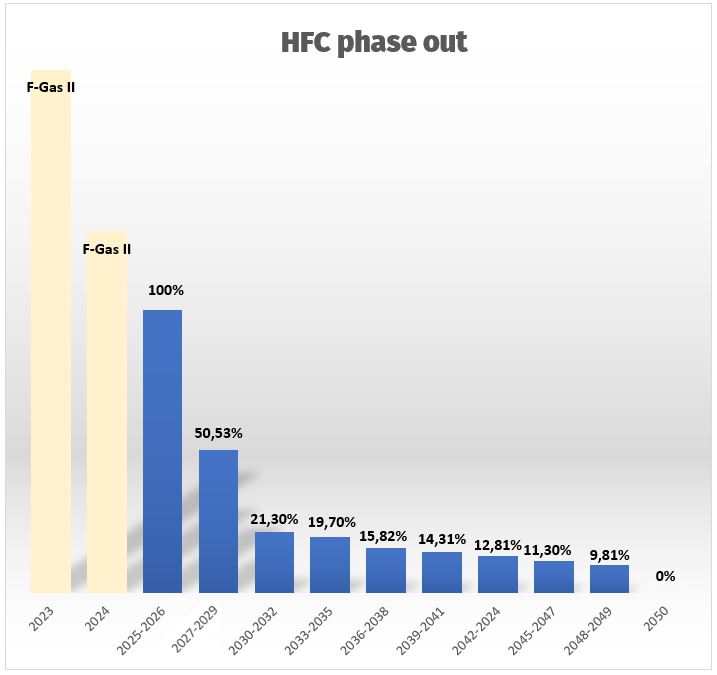F-Gas III : what’s changing?
At the end of January, the European Parliament adopted, on first reading, the revision of F-Gas III – Regulation (EU) nº 517/2014.
Key points:
- The text accentuates the reduction in HFC quotas until a phase-out in 2050.
- The quotas allocated by the Commission for HFCs will be gradually reduced:
- 11% of global volumes will be reserved for new entrants.
- From 2025, a reduction of 22% compared with 2024, rising to 12% from 2036.
- A total ban on the marketing of certain products and equipment containing HFCs (e.g. domestic refrigerators, coolers, foams and aerosols).
- Introduction of new restrictions and/or constraints for commercial and industrial refrigeration, air conditioning and heat pumps, and electrical switches.
- Certification review.
- Assessment reports are planned (the first as early as 2027) and their results could lead to amendments to the regulation, either for the better or for the worse.
In addition, the new regulations set specific dates for the complete elimination of the use of fluorinated gases for certain applications in new equipment:
- in chiller, air conditioning and heat pump systems:
- 2032 for small packaged heat pumps and chillers (<12kW)
- 2035 for split-system air conditioners and heat pumps (<12kW),
- in electrical switchgear :
- 2026 for medium-voltage electrical switchgear up to and including 24 kV.
- 2030 for medium-voltage electrical switchgear up to and including 52 kV.
The new regulations also introduce new provisions for maintenance and servicing:
- 2025 the use of fluorinated greenhouse gases with a GWP ≥ 2500 for all refrigeration equipment is banned (except regenerated gases until 2030) and 2026 for air conditioning and heat pumps.
- 2032 the use of fluorinated greenhouse gases with a GWP ≥ 750 for fixed refrigeration equipment, with the exception of chillers, is prohibited (except regenerated without limitation).
HFC quota levels

Implementation
The text was published in the Official Journal of the European Union on 20 February 2024 and will come into force 20 days after its publication, on 11 March. The quantities of fluorinated refrigerants placed on the market will be significantly reduced.

However, there are long-term solutions for new installations with a GWP of less than 150. For existing installations, we can support you in the substitution process (HFO technology, regenerated products, etc.).
The entire Climalife team is at your service to study this transition together and offer you alternatives with a very low environmental impact and greater energy efficiency. We look forward to hearing from you!
ODS regulations: what are they?
The text on Ozone Depleting Substances was also voted on at the same time as F-Gas. It repeals regulation 2009/1005.
Key points:
- Special provisions for critical uses of halon.
- Strict exemptions for the use of ozone-depleting substances: as raw materials or processing agents, in laboratories and for fire protection.

